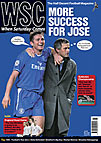 The scuffle at St James' Park was anything but savoury, but let's not get carried away
The scuffle at St James' Park was anything but savoury, but let's not get carried away
If you look outside for a moment, it’s likely that the streets will be awash with children scrapping with each other in imitation of the fight broadcast from St James’ Park on April 2. Some will be pretending to be Lee Bowyer or Kieron Dyer, others will have been assigned the roles of peacekeeper Gareth Barry and bystander Lee Hendrie. Who knows where it may lead? When will footballers realise that they are role models whose every action, however stupid, will likely be mirrored by impressionable youngsters?
Alternatively, of course, one might think that punch-up has simply provided ammunition for those looking for reasons to complain about the modern player with his five-figure weekly wage, fleet of sports cars and wacky tattoos. The Northumbria police spent several days conducting interviews at the club, although the scenes “that sum up a generation and its failings” (Sunday Mirror) had not generated any public complaint. Nor does there seem to be any reason to believe this will set a trend among players given that it’s nearly ten years since the last major mid-match punch-up between team-mates, when Blackburn’s Graeme Le Saux and David Batty tangled over a misdirected pass during a Champions League match in Moscow in 1995.
That incident generated plenty of coverage but only a fraction of the spluttering outrage produced by the Gallowgate Rumble. Did anyone suggest that either should be sacked or that they were a disgrace to their professions? Indeed Le Saux, still playing and now a TV pundit, remains the very model of the urbane educated footballer (a perception that famously riled Robbie Fowler to the extent that he felt compelled to question Le Saux’s sexuality during a game between Chelsea and Liverpool).
Far worse violence among sportsmen is common. There have been many instances of players stamping on prone opponents – indeed Alan Shearer, whose non-retirement party was deemed to have been tragically spoiled by his squabbling colleagues, avoided official censure for such an incident shortly before the 1998 World Cup. Rugby union players, admittedly usually opponents, regularly have fist-flailing set-tos that used to be described as “a wee bit of nonsense” by veteran commentator Bill McLaren.
The vehemence of the outcry has to be seen in the context of Bowyer’s and Dyer’s history. Both players have a negative public image. Past newspaper stories identified Dyer as the leader of a faction of young players at Newcastle whose social activities were widely documented in the wake of a police investigation, eventually abandoned, into an alleged sexual assault in a London hotel. Dyer’s open falling-out with Bobby Robson, culminating in his refusal to play out of position in the first match of this season, also helped to put him at odds with senior members of the Newcastle squad, notably Shearer.
The details of Bowyer’s past – he was variously described in reports of the scrap as “loathsome”, “noxious” and, in Tony Cascarino’s words, “a toerag” – need no repetition, except to say that few thought the £90,000 record fine he received at Leeds would be exceeded any time soon, especially not by the same player.
Though of course Bowyer is a very wealthy man, his career has been a failure, by and large, especially given the talent he showed at his Elland Road peak. Players and others in the game can be damaging role models when their amoral behaviour is rewarded with success, but the descent of Bowyer to a point where he surely has a negative marketing value is not something anyone would try to emulate. Just as what has happened to Jermaine Pennant of late is not going to persuade anyone that driving a car while drunk, banned and uninsured is a good way to spend a Saturday night.
Newcastle’s bizarre season, suddenly so promising (leading to the closure of souness-out.co.uk), has been thrown into turmoil, with both players out of the FA Cup semi-final; their fans are understandably angry. Graeme Souness, who perhaps thought that his defenestration of Craig Bellamy had brought to an end his need to bang heads together, has his work cut out once more. Bowyer’s shirt was ripped beyond repair. But the greatest lasting harm is to both players’ reputation and who can get worked up about that? And, as we see Freddy Shepherd talk about “the worst day I’ve had as chairman of this football club”, we can’t help reflect that more damage was done to Newcastle by the revelations that forced him to step down for a few months in 1998.
From WSC 219 May 2005. What was happening this month